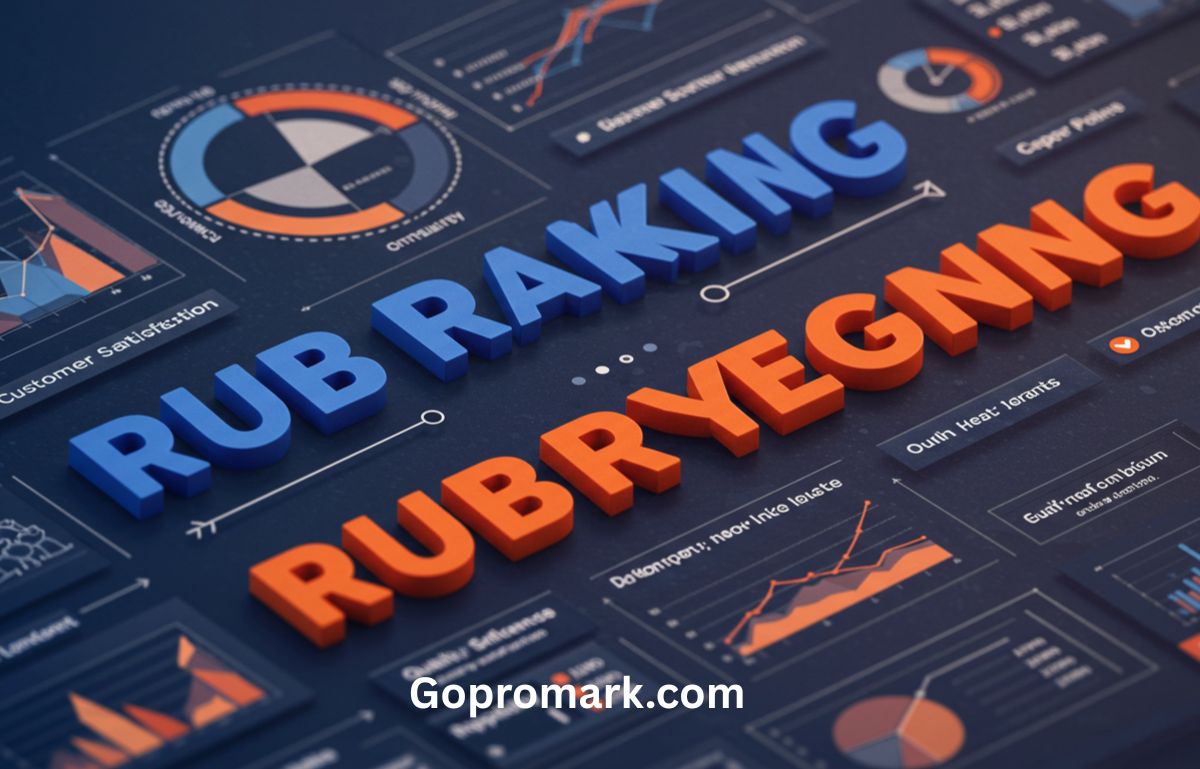In today’s data-driven world, performance evaluation systems have become essential for ensuring quality, consistency, and competitiveness. Among these systems, rub ranking stands out as a structured and objective way to measure and compare individual or group performance. Whether used in education, corporate environments, or sports, rub ranking helps set clear expectations and fosters improvement. This article will explore the concept of rub ranking, its applications, benefits, and best practices for implementation.
The Origin and Meaning of Rub Ranking
The term rub ranking is derived from the combination of “rubric” and “ranking.” A rubric is a scoring guide used to evaluate performance based on a set of criteria, while ranking refers to ordering items or individuals based on performance or merit.
Together, rub ranking is a system that combines qualitative assessments (through rubrics) with quantitative outcomes (through rankings). It provides a dual approach that not only measures performance but also compares it against others, making it highly effective for competitive and evaluative scenarios.
Applications of Rub Ranking in Different Fields
Education
In the academic world, rub ranking is widely used to assess students’ assignments, projects, and presentations. Educators design rubrics with specific criteria—such as creativity, structure, clarity, and depth of research—and then use them to rank students based on how well they meet each standard.
Example:
In a high school writing contest, students may be graded on grammar, originality, and coherence. The scores from the rubric are then used to determine the top performers through a rub ranking system.
Corporate Performance Management
Rub ranking plays a pivotal role in employee performance evaluations. Companies use it to assess competencies like teamwork, leadership, innovation, and customer service.
Example:
During annual reviews, managers may use a rubric to score employees on various skills. The resulting data helps HR departments rank employees for promotions, bonuses, or further development.
Sports and Athletics
Coaches and judges in competitive sports often use rubrics to evaluate athletic performances based on form, execution, and difficulty. helps fairly compare athletes who perform differently but with similar technical skill.
Art and Design Competitions
Creative industries use to judge subjective entries like paintings, digital art, and product designs. Judges use predefined criteria to maintain objectivity and consistency while ranking entries.
Benefits of Using Rub Ranking
Objectivity and Transparency
Rub ranking reduces bias by ensuring all evaluations are based on the same criteria. This transparency builds trust among participants and stakeholders.
Consistency in Evaluation
When multiple evaluators are involved, ensures a consistent scoring framework, reducing variations and increasing reliability.
Motivational Value
Knowing that performance will be both evaluated and ranked can motivate individuals to strive for excellence. The detailed feedback from rubrics helps learners and professionals understand their strengths and weaknesses.
Clear Expectations
Rubrics clarify what is expected. By combining this with ranking, participants know not only how they performed but how they compare to peers.
Steps to Develop an Effective Rub Ranking System
Define Clear Evaluation Criteria
Start by listing the exact elements that will be assessed. These should align with the goals of the evaluation.
Example: In a design competition, criteria could include originality, usability, visual appeal, and innovation.
Create a Detailed Rubric
Assign point values or descriptors to each level of performance (e.g., Excellent, Good, Fair, Poor). Be specific to avoid ambiguity.
Weight Criteria Accordingly
Not all criteria carry the same importance. Assign weights to each based on relevance.
Example: In a customer service review, problem-solving might carry more weight than attire.
Score and Rank Objectively
After scoring based on the rubric, calculate total scores and rank participants accordingly. Avoid favoritism by anonymizing entries when possible.
Challenges and Limitations of Rub Ranking
While is highly effective, it’s not without flaws:
-
Subjectivity: Even with rubrics, human bias can seep in, especially in subjective fields like art.
-
Overemphasis on Ranking: Excessive focus on being “better” than others can discourage collaboration and intrinsic motivation.
-
Time-Consuming: Creating comprehensive rubrics and performing detailed evaluations can require significant time and effort.
Best Practices to Improve Rub Ranking Accuracy
-
Train Evaluators: Provide guidance on how to interpret rubric criteria consistently.
-
Use Peer Reviews: Involve multiple evaluators and average their scores to minimize bias.
-
Regularly Update Rubrics: Keep the rubrics relevant by revising them based on feedback and changing standards.
-
Utilize Technology: Use digital tools and software to automate , especially when dealing with large data sets.
Technology and Rub Ranking
Modern systems are often integrated into learning management systems (LMS) and HR software platforms, allowing for seamless scoring and comparison. AI-based tools can even provide real-time analytics and predictive insights based on data.
Real-World Example: Rub Ranking in Hiring
Imagine a company hiring for a graphic designer role. Candidates are asked to complete a task. A rubric is used to evaluate elements such as creativity, adherence to brand guidelines, and technical proficiency. Once scored, the applicants are rub ranked, allowing the HR team to shortlist top candidates objectively.
Conclusion: The Future of Rub Ranking
Rub ranking is not just a method—it’s a mindset that prioritizes fairness, clarity, and actionable feedback. As workplaces, classrooms, and competitions grow increasingly complex, offers a dependable way to measure and compare performance. Its integration with technology will only enhance its impact in the coming years, ensuring more accurate, insightful, and productive evaluations.
By applying correctly, organizations and individuals alike can make better decisions, foster growth, and set a strong foundation for excellence.
